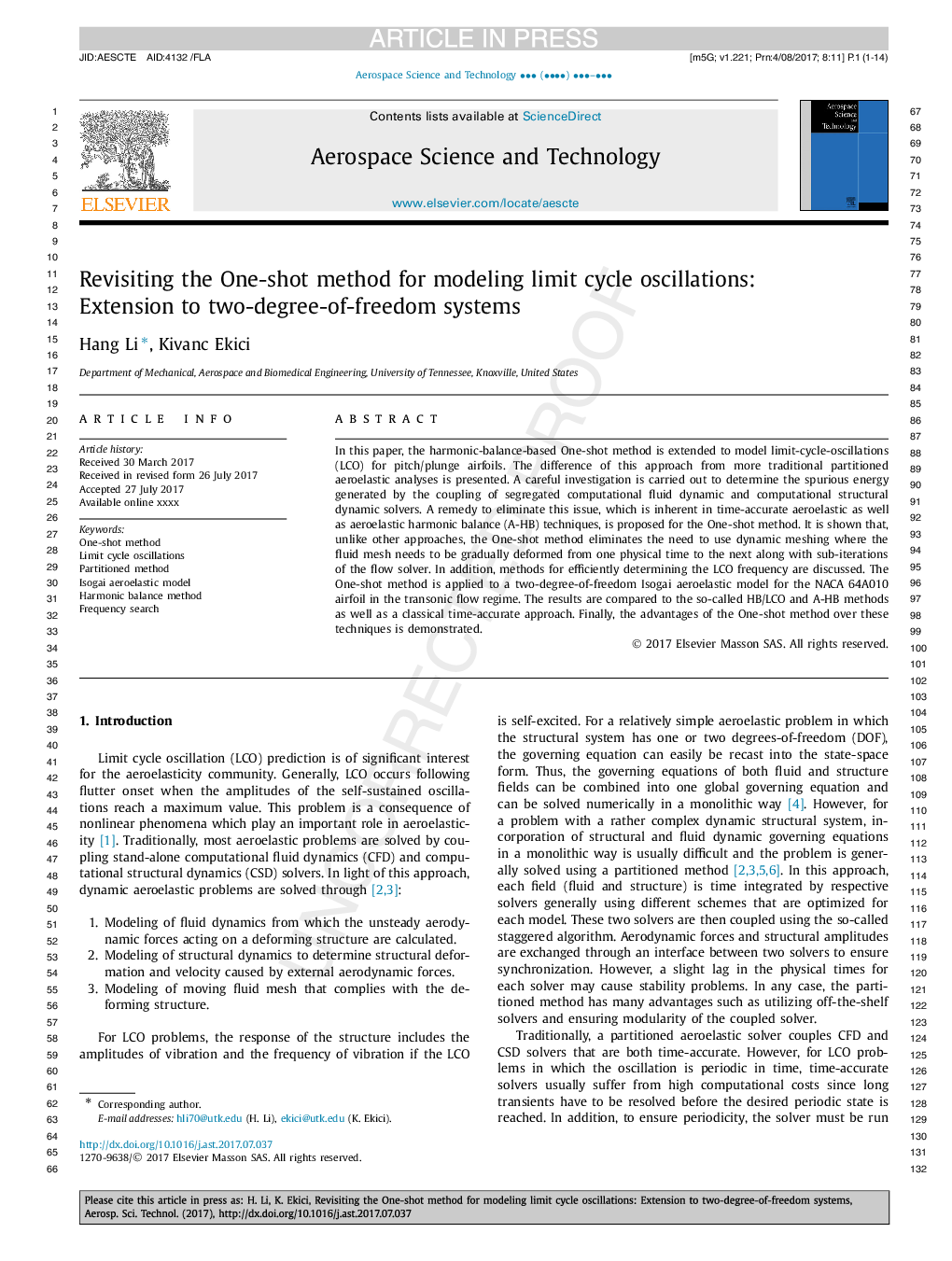| Article ID | Journal | Published Year | Pages | File Type |
|---|---|---|---|---|
| 5472777 | Aerospace Science and Technology | 2017 | 14 Pages |
Abstract
In this paper, the harmonic-balance-based One-shot method is extended to model limit-cycle-oscillations (LCO) for pitch/plunge airfoils. The difference of this approach from more traditional partitioned aeroelastic analyses is presented. A careful investigation is carried out to determine the spurious energy generated by the coupling of segregated computational fluid dynamic and computational structural dynamic solvers. A remedy to eliminate this issue, which is inherent in time-accurate aeroelastic as well as aeroelastic harmonic balance (A-HB) techniques, is proposed for the One-shot method. It is shown that, unlike other approaches, the One-shot method eliminates the need to use dynamic meshing where the fluid mesh needs to be gradually deformed from one physical time to the next along with sub-iterations of the flow solver. In addition, methods for efficiently determining the LCO frequency are discussed. The One-shot method is applied to a two-degree-of-freedom Isogai aeroelastic model for the NACA 64A010 airfoil in the transonic flow regime. The results are compared to the so-called HB/LCO and A-HB methods as well as a classical time-accurate approach. Finally, the advantages of the One-shot method over these techniques is demonstrated.
Related Topics
Physical Sciences and Engineering
Engineering
Aerospace Engineering
Authors
Hang Li, Kivanc Ekici,
